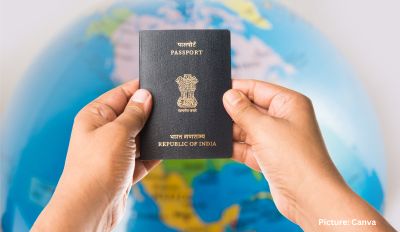In a landmark achievement, India has ascended to the summit of the global remittance charts in 2023, registering an astounding $125 billion, according to the latest World Bank report. This financial milestone not only underscores the strength of India’s diaspora but also highlights their pivotal role in shaping the economic landscape of their home country.
The Indian diaspora, dispersed across the globe, has emerged as a significant workforce in key nations, including the United States, the United Kingdom, Singapore, and the Gulf Cooperation Council nations. Their unparalleled contribution to India’s economy is evident in the record-breaking remittance figure, solidifying India’s position at the forefront of South Asian remittances.
The World Bank’s Migration and Development Brief, released on December 18, 2023, reveals that the total remittance flow to low- and middle-income countries reached a staggering $669 billion in 2023. India’s share of $125 billion represents a substantial increase from the previous year’s $111.22 billion, showcasing a remarkable 66% contribution to South Asian remittances in 2023, up from 63% in 2022.
Key contributors to India’s remittance influx are the United States, the United Kingdom, Singapore, and the Gulf Cooperation Council countries, particularly the United Arab Emirates. Collectively, these nations account for 36% of India’s total remittances, with the UAE alone contributing 18%.
Government initiatives have played a pivotal role in bolstering these remittances. The integration of India’s Unified Payments Interface (UPI) with Singapore’s payment systems and collaborations with the UAE, involving the use of local currencies for cross-border transactions, have streamlined the flow of remittances.
Furthermore, India’s implementation of non-residential deposit programs has attracted substantial foreign currency. As of September 2023, non-residential deposits in India amounted to $143 billion, marking a $10 billion increase from the previous year, as per the World Bank report.
The report underscores the role of remittance costs in these financial flows. South Asia, particularly the remittance corridor between India and Malaysia, boasts the lowest remittance costs globally, standing at just 1.9%. This, coupled with robust labor markets and declining inflation in high-income source countries, has been instrumental in the surge of remittances to India.
However, the World Bank cautions against potential risks, including a projected decline in real income for migrants in 2024 due to global inflation and low growth prospects. Despite these concerns, remittances to low- and middle-income countries are expected to grow, albeit at a slower pace, in the coming years.
Crucially, this report sheds light on the multifaceted impact of these financial inflows on the Indian economy. Beyond the monetary value, it signifies a complex interplay of global migration, economic policy, and the pivotal role of the Indian diaspora. As India continues to lead the charge in global remittances, the diaspora’s influence on the nation’s economic trajectory becomes increasingly undeniable.











